The Salzburg Mozarteum Foundation
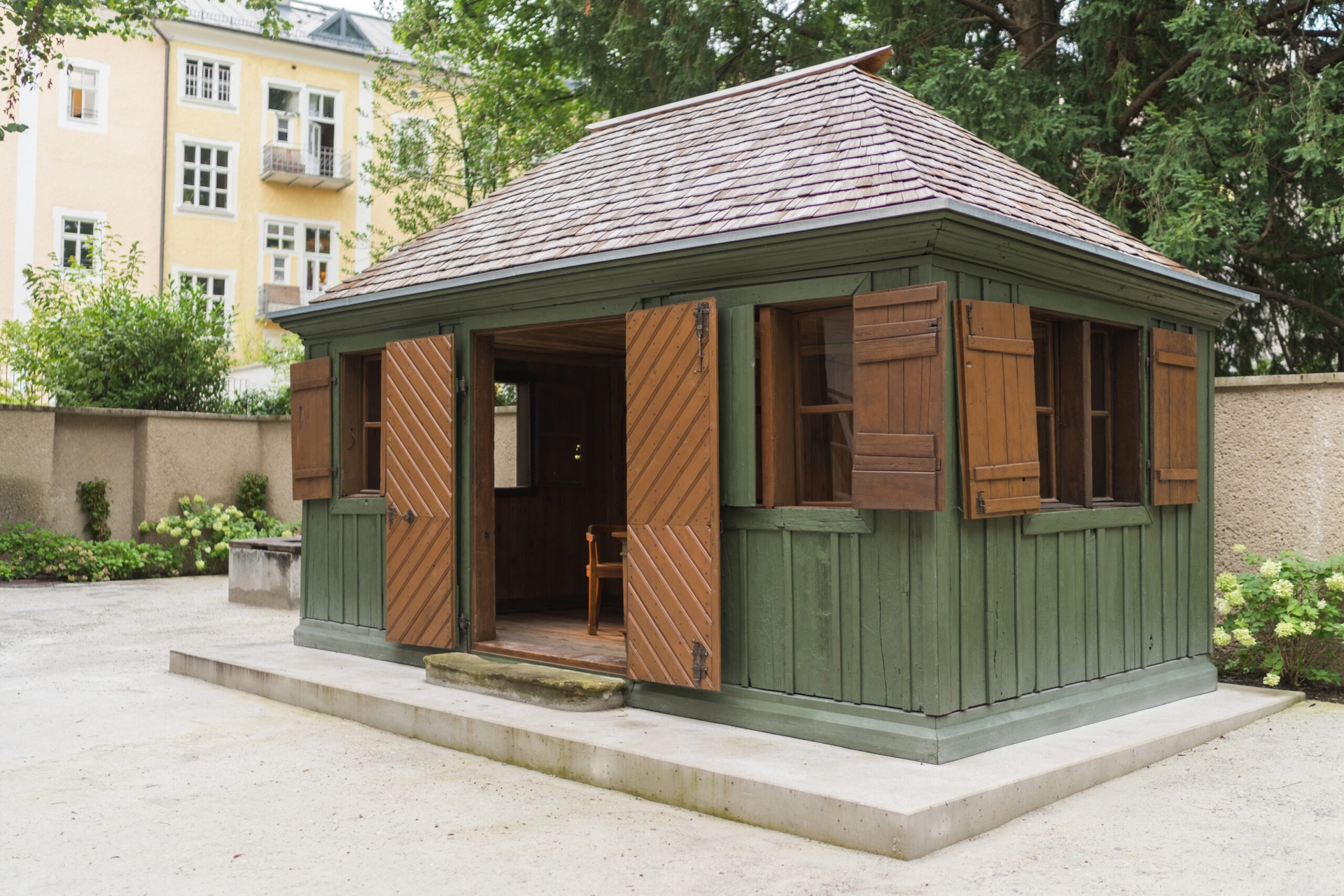
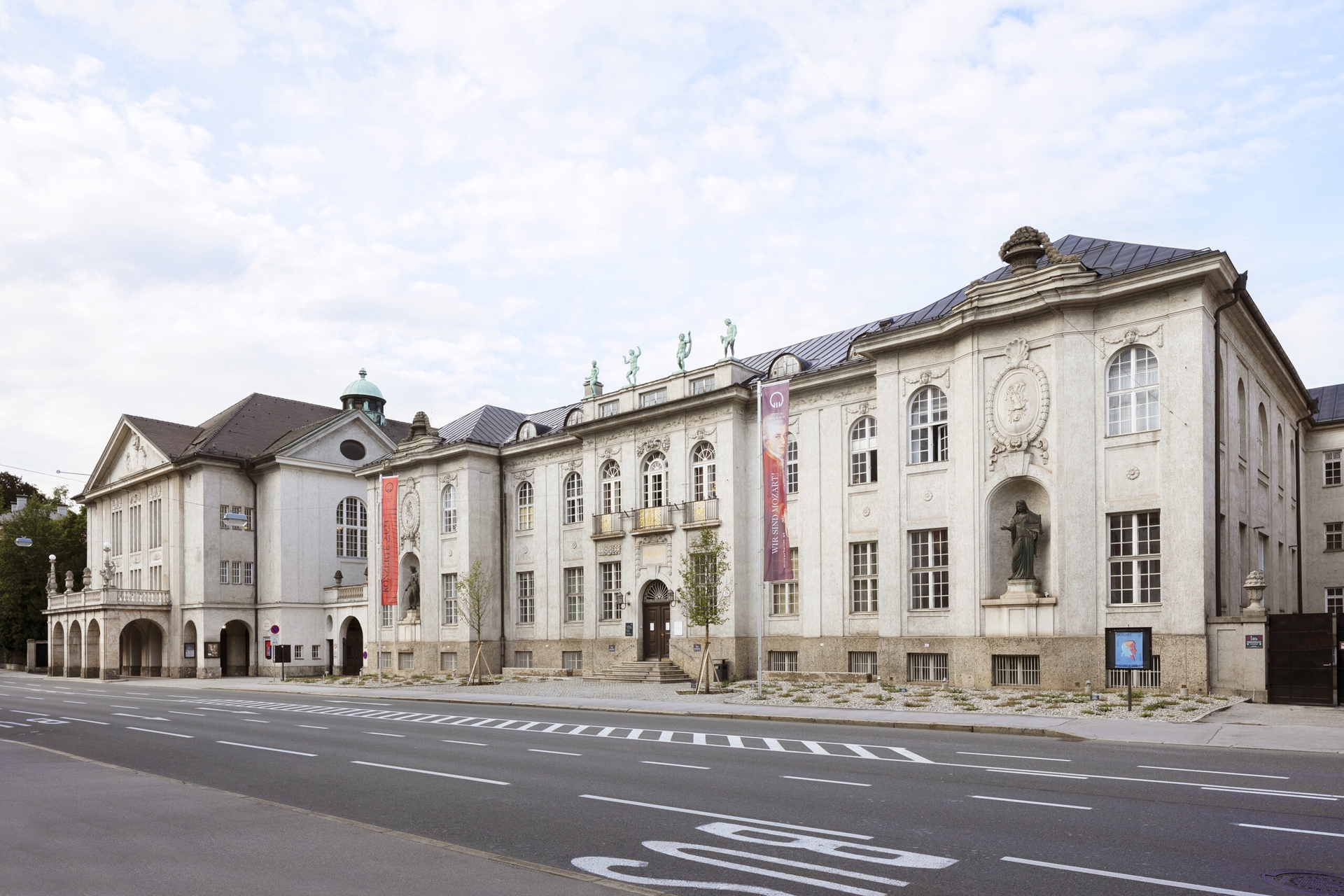
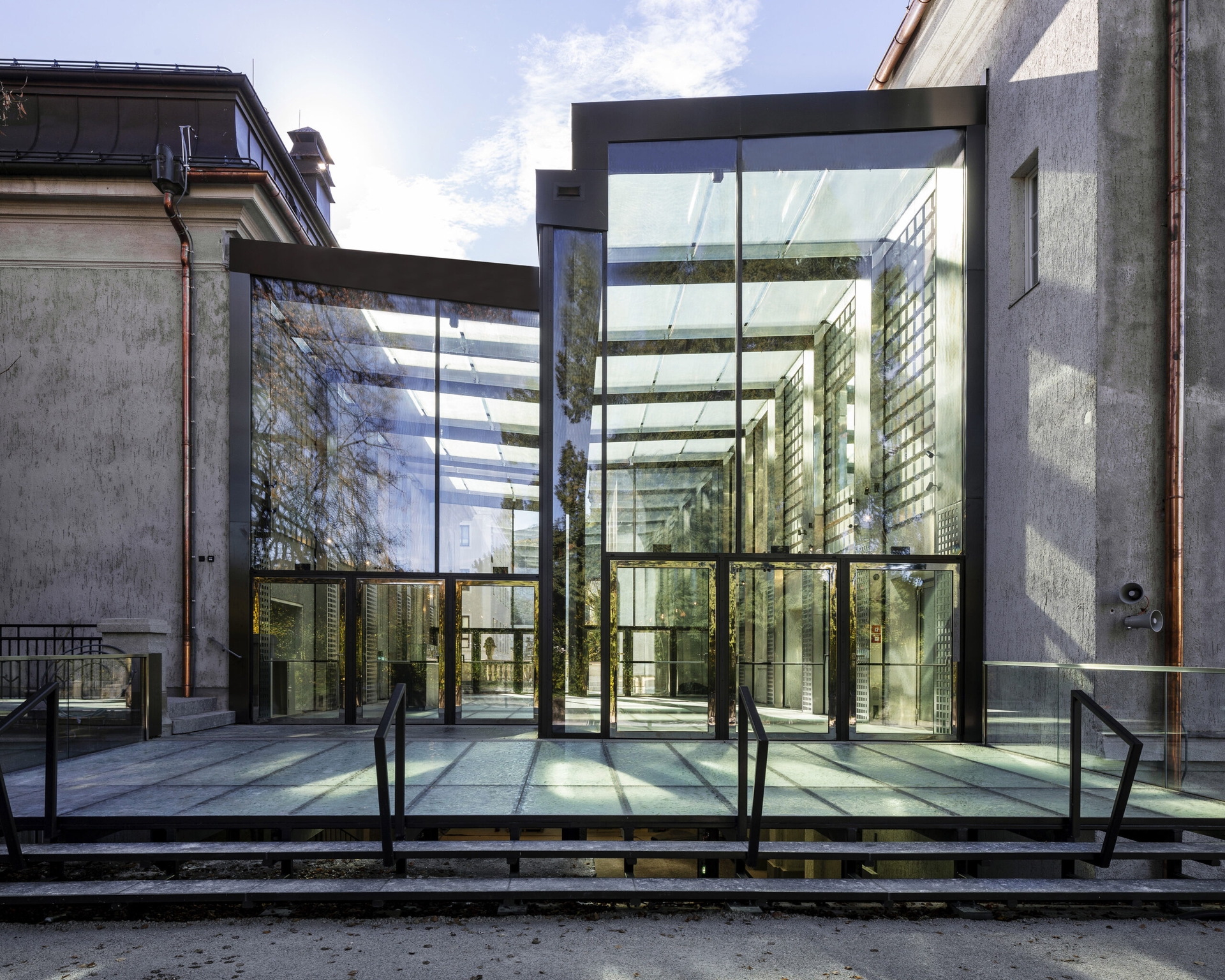
Foyer von Garten bei Nacht
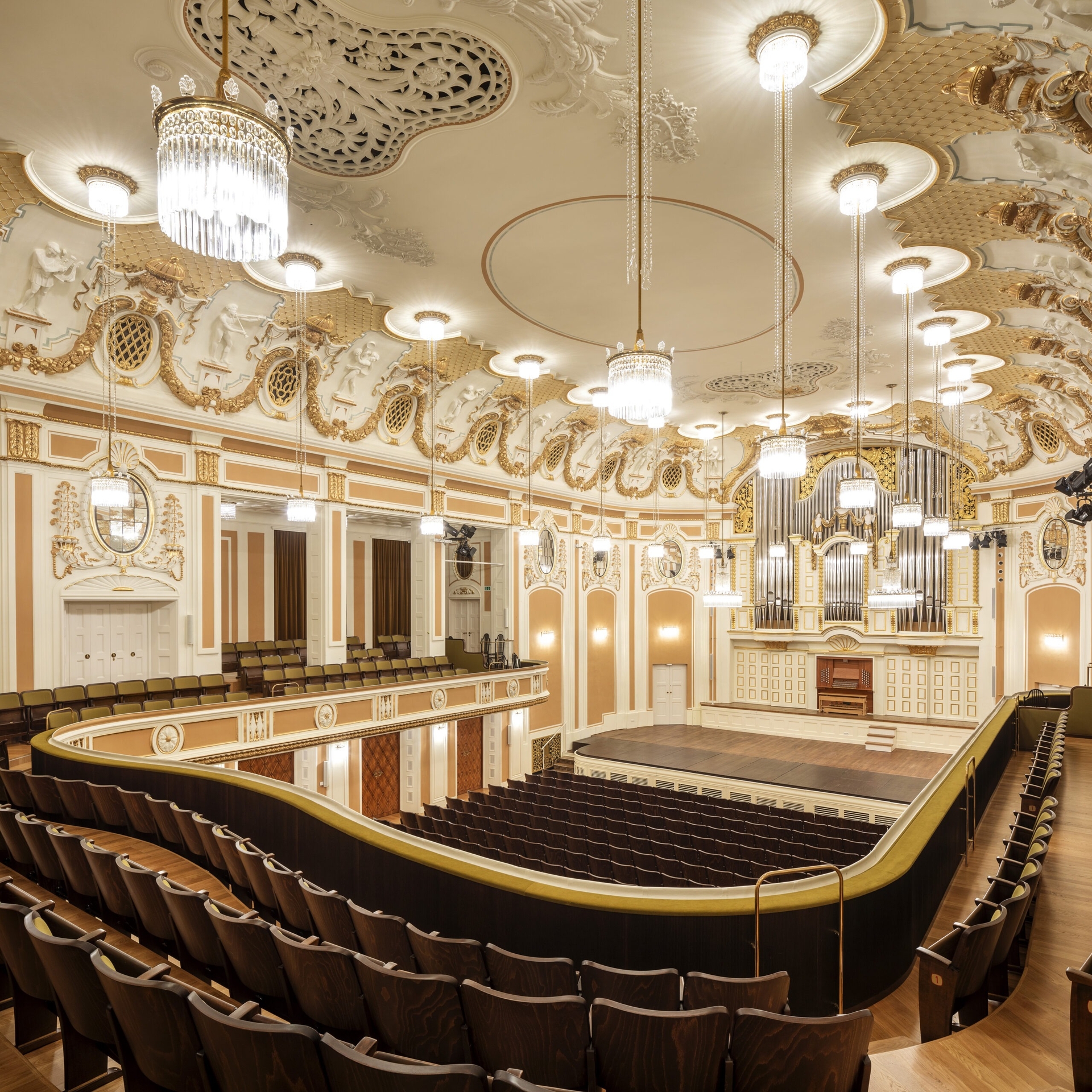
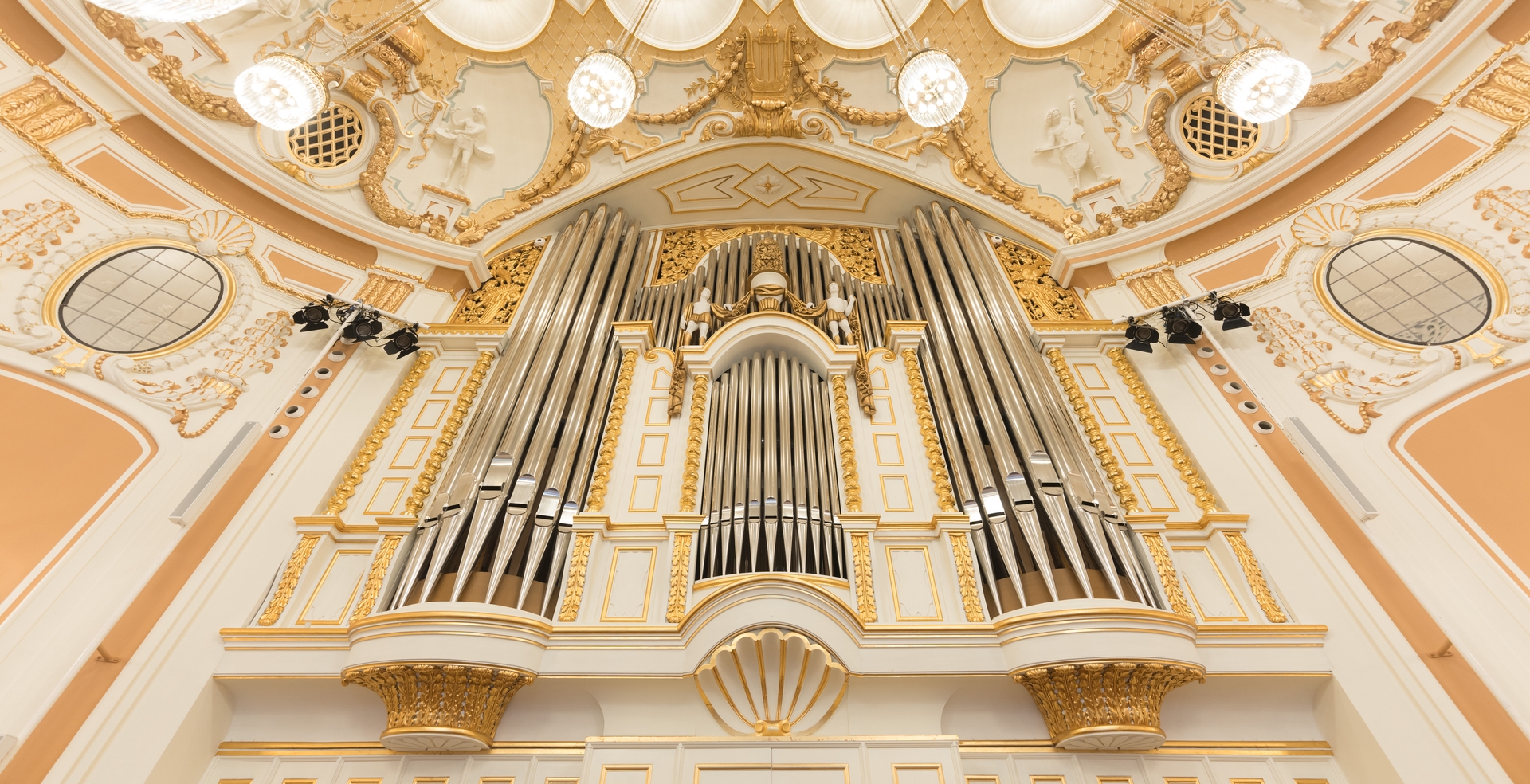


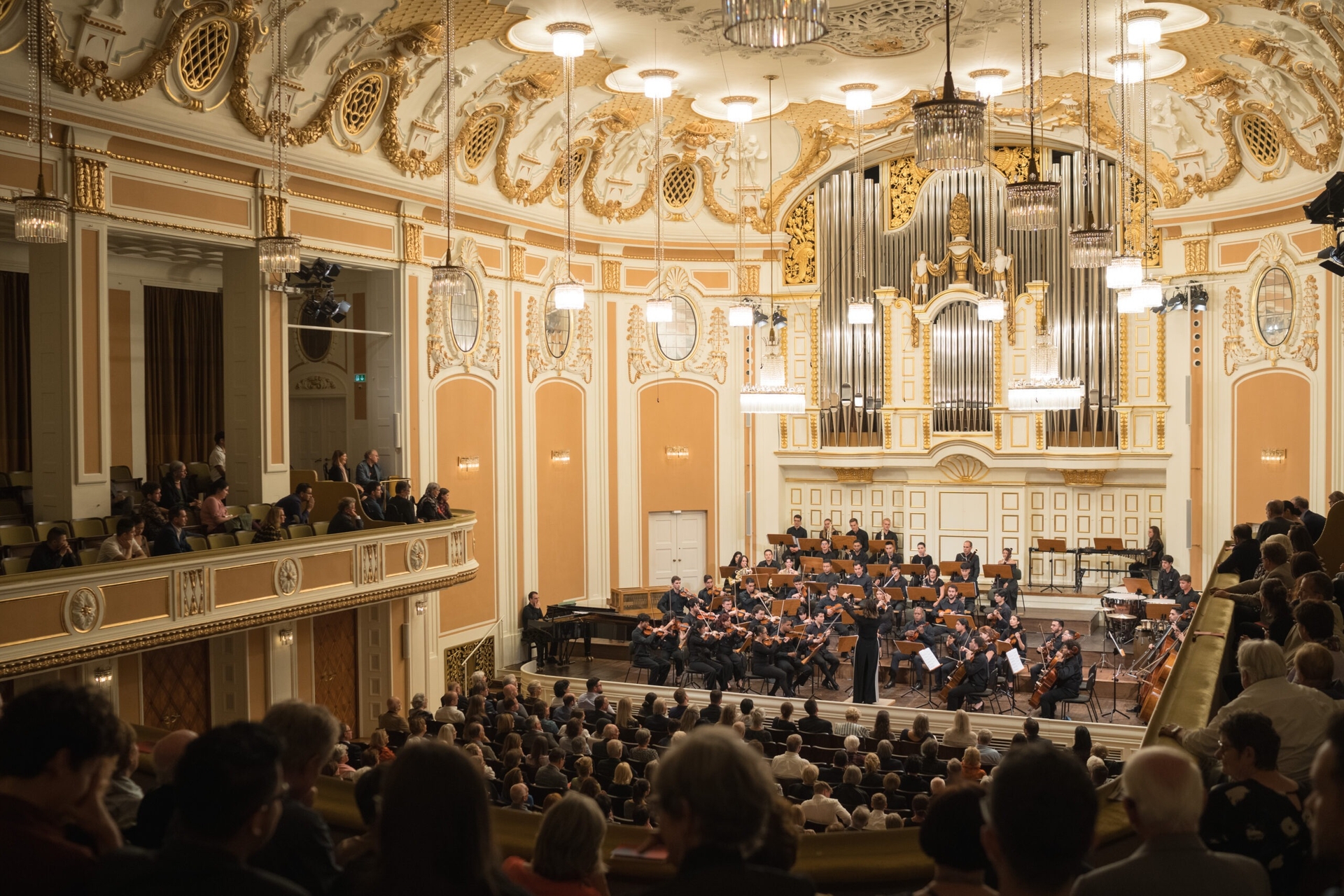

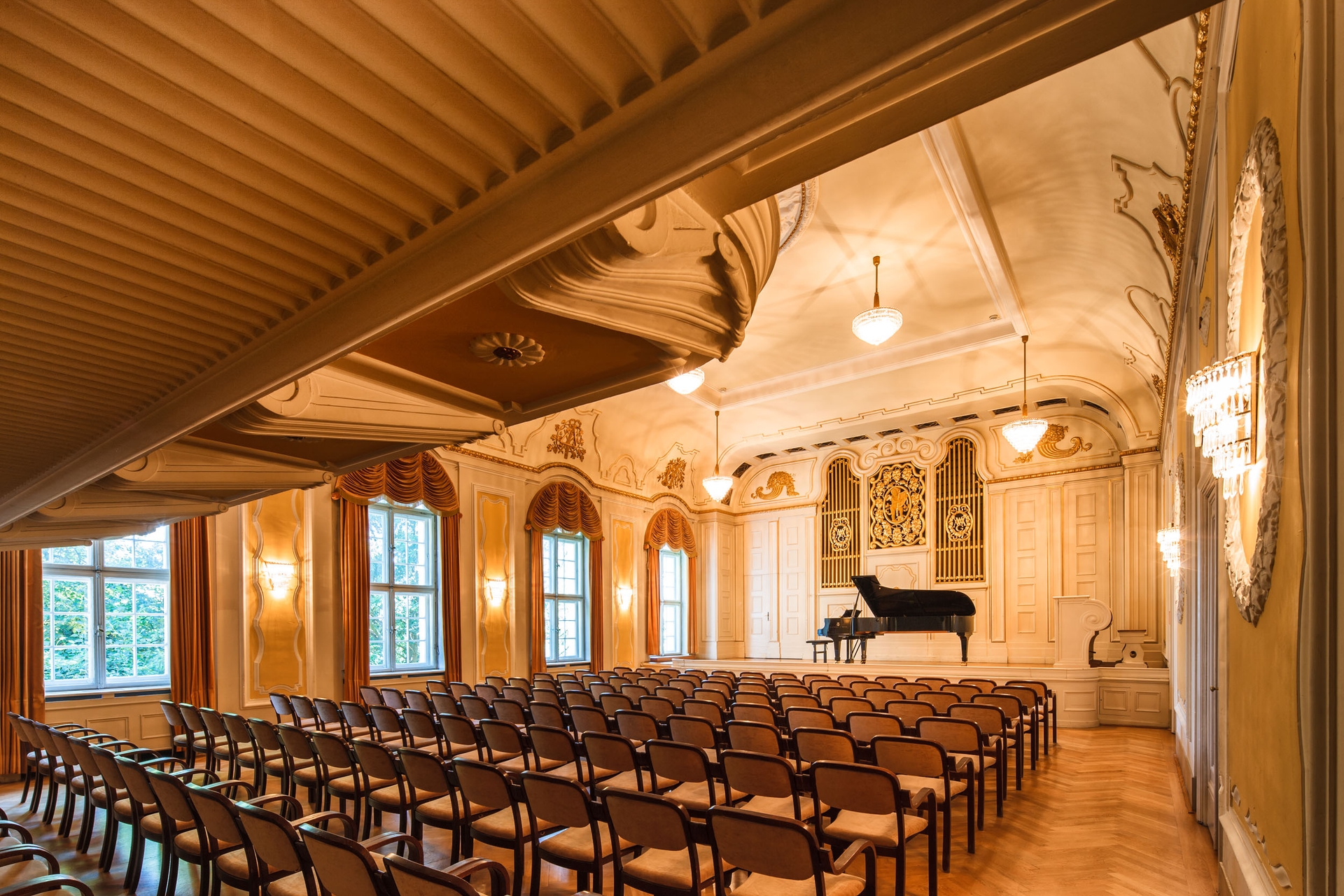
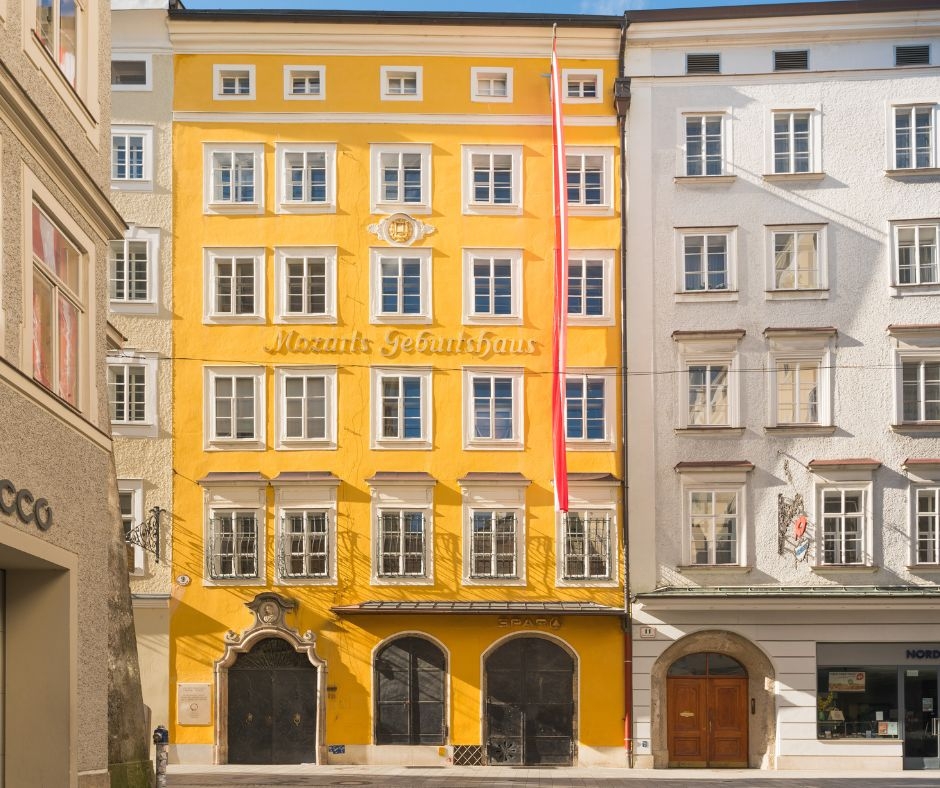
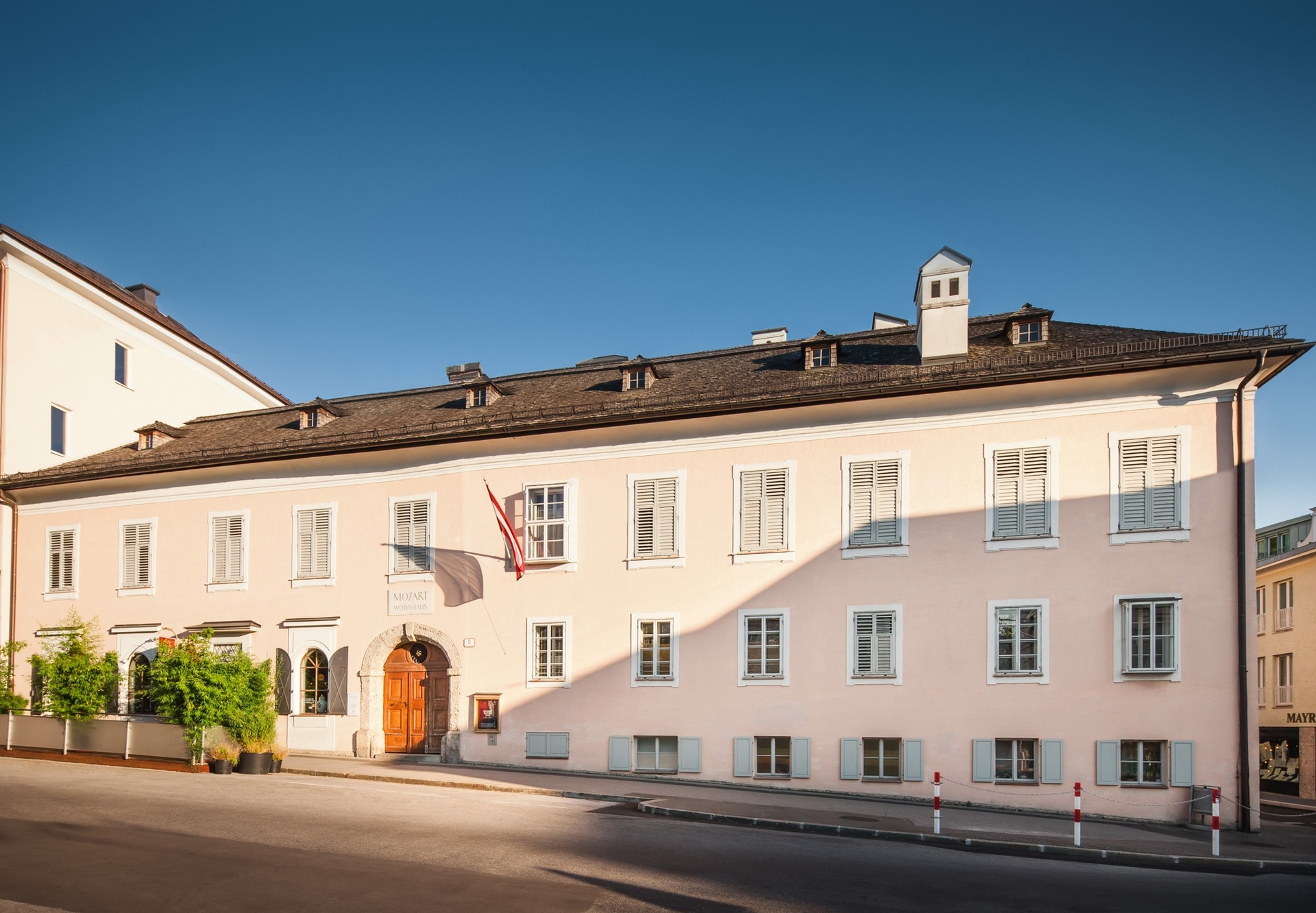



Foyer von Garten bei Nacht










The Salzburg Mozarteum Foundation is a non-profit organization whose primary focus has been the life and œuvre of Wolfgang Amadé Mozart.
The organisation offers concerts, maintains the Mozart museums and supports academic research. These three core areas seek not only to preserve and foster tradition but to be open to changing perspectives and consider new approaches when encountering the works of Mozart.

Our Mission
For more than 250 years Wolfgang Amadé Mozart has fascinated people all over the world through his works and his personality.
The Salzburg Mozarteum Foundation is the leading international institution for preserving and disseminating this invaluable cultural heritage, and presents the very many different facets of Mozart to the world.
It is our job to make his music, his life and his personality accessible to all people and generations. As a non-profit organisation we are committed to doing this in a form always relevant to our time by means of varied activities in the three spheres of concerts, research and museums. We create a bridge between tradition and contemporary culture and enable people to analyse the composer from different perspectives, thereby giving them plenty of food for thought. Knowledge about Wolfgang Amadé Mozart serves us as the basis and source of inspiration for creative processes and academic insights.
The association known as the Salzburg Mozarteum Foundation was founded in 1880 by citizens of the city of Salzburg as the ‘International Mozarteum Foundation’ and is rooted in the Cathedral Music Association and Mozarteum that dates from 1841. Mozart’s widow, Constanze, who lived in Salzburg from 1824, as well as the two sons Carl Thomas and Franz Xaver Wolfgang, donated the majority of his personal belongings and memorabilia to the association. The Salzburg Mozarteum Foundation thus owns the largest collection worldwide of original letters, portraits and instruments of the Mozart Family.
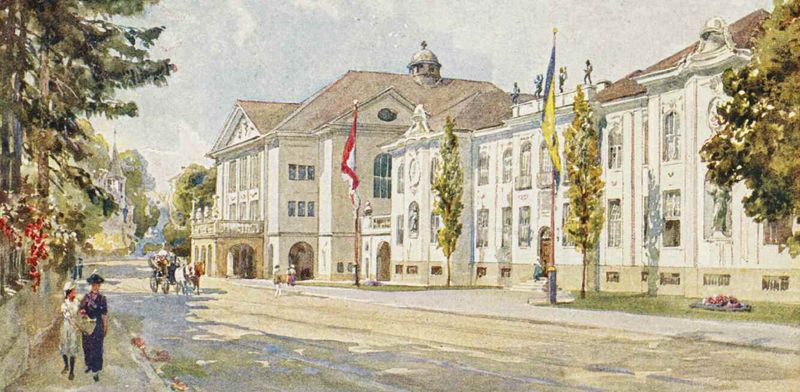
History
A Historical Survey
The Cathedral Music Association and Mozarteum was founded on 22 April 1841 on the initiative of a group of committed citizens of Salzburg. Besides organising concerts the association promoted musical education.
In 1844, Mozart’s son, Franz Xaver Mozart, authorized that the manuscripts and fragments in his estate, the clavichord and the entire library should be bequeathed to the Mozarteum.
The centenary of Mozart’s birth was celebrated in 1856. Many artists and singing societies took part and a first “Mozart Exhibition” took place in Mozart’s Birthplace, Getreidegasse No. 9.
The Salzburg Mozarteum Foundation came into being on 20 September 1880. Today’s aims – to foster Mozart’s heritage and make it accessible in three spheres: concerts, research and museums – is reflected already in the Foundation’s statutes. These already established the aim of building a Mozart House for concert performances as well as for a Mozart library and Mozart archives.
In 1875 the Salzburg Mozarteum Foundation took part in a first major academic project: the first critically assessed complete edition of the works of Mozart was published between the years 1876 and 1907 by Breitkopf & Härtel in Leipzig.
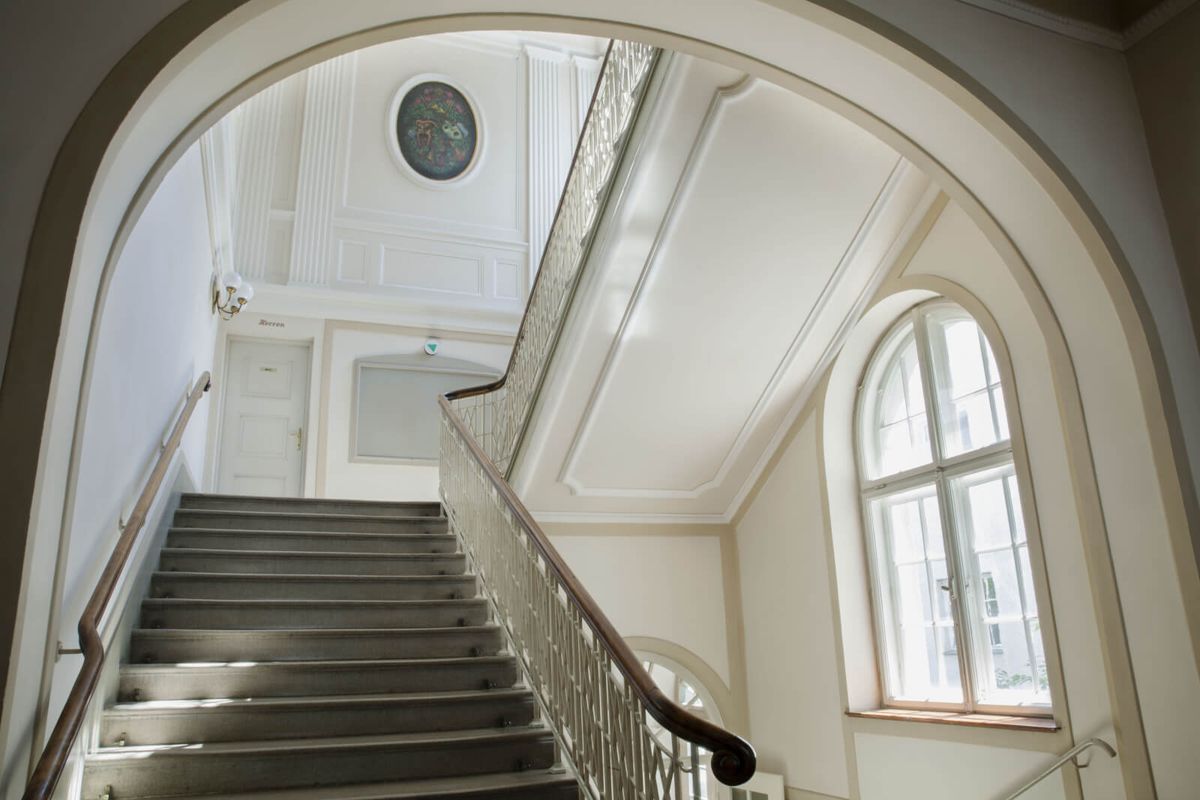


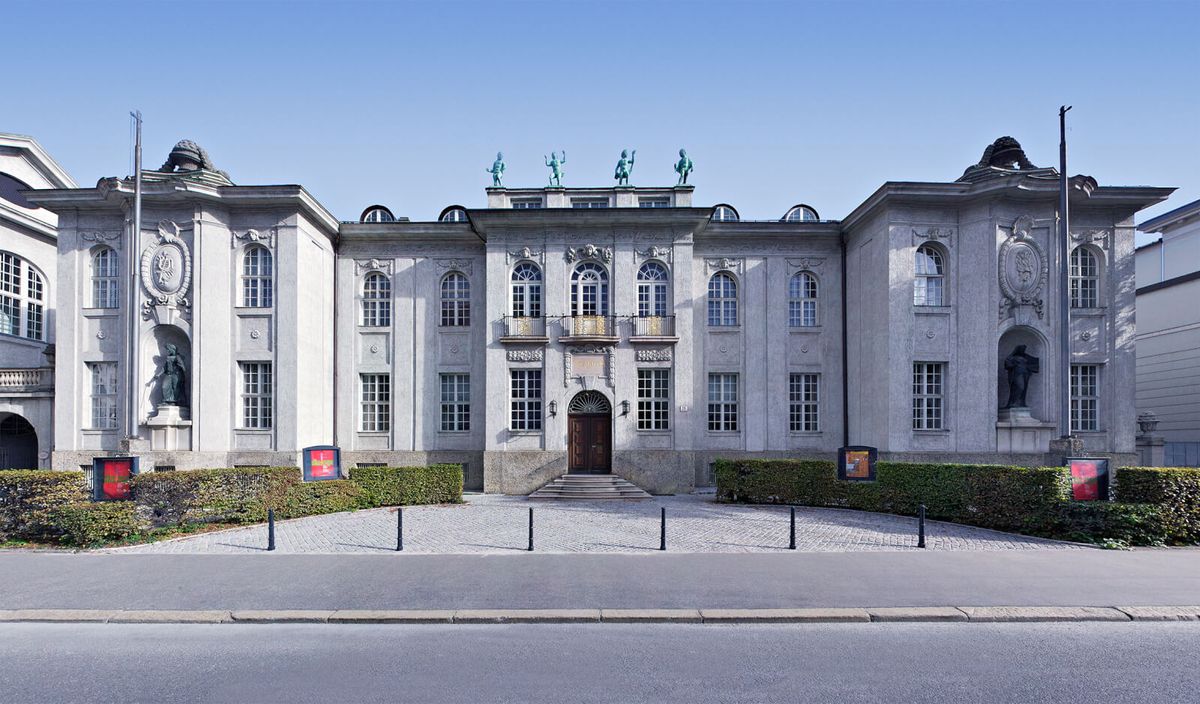
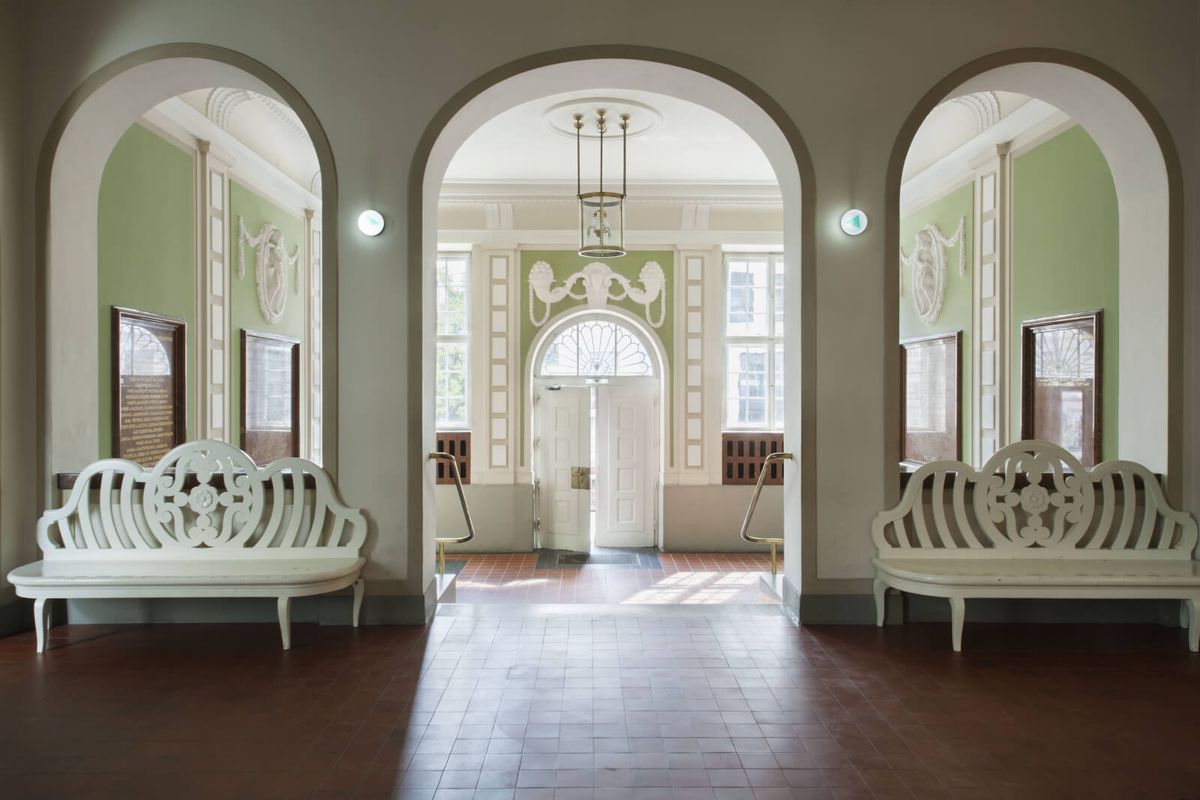
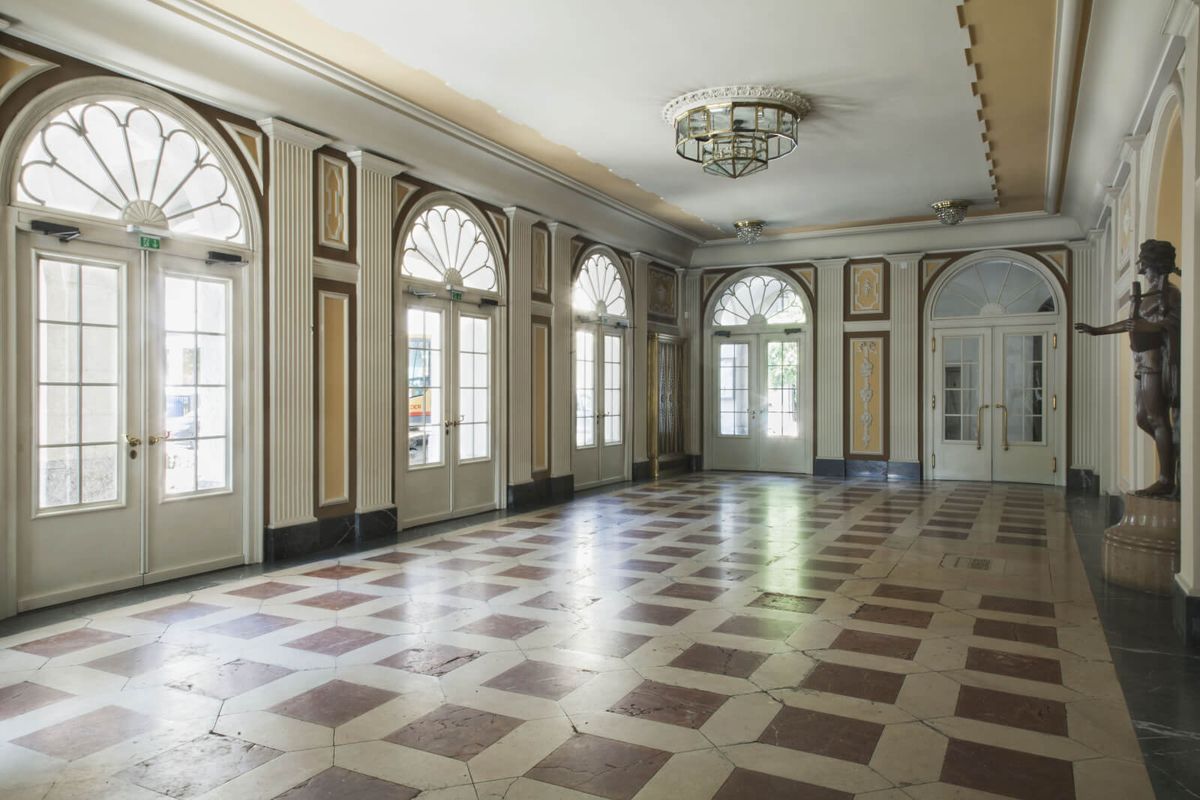







Building of the foundation
Richard Berndl, an architect from Munich, designed the building for the Mozarteum Foundation at Schwarzstrasse, No. 26, in a late historic style typical of Munich with elements of the Munich Jugendstil style. The building was constructed from 1911 to 1914 and ceremoniously opened on 14 September 1914. The offices of the Salzburg Mozarteum Foundation are located here, as well as the two concert halls, the Grosser Saal (Great Hall) and the Wiener Saal (Viennese Hall) – two of Salzburg’s most beautiful concert halls – the Bibliotheca Mozartiana and several classrooms which are used by the Mozarteum University.
On the façade of the building is an inscription which was created by the artist Sylvie Fleury on the occasion of the first Dialogues Festival in 2005. It is a phrase in Mozart’s handwriting typical of Mozart and also of Fleury’s œuvre, illuminated by neon light and repetitively reading, “I would like to have everything that is good, genuine and beautiful!”

Board
Full members of the board of trustees are each appointed by the ‘Mozart-Tag’ for a three year term. The board of trustees elects a president, two vice-presidents and three additional members of the executive committee from its midst. The executive committee determines the strategic direction, conducts business affairs and represents the International Mozarteum Foundation publicly. Moreover, the board of trustees elects a chairperson and two representatives. It supervises and gives advice to the executive committee.
Above, left to right:
Dr. Thomas Bodmer, Daniell Porsche, Mag.a Ulrike Sych, Mag. Christoph Andexlinger, Johannes Graf von Moÿ, Dr. Johannes Honsig-Erlenburg, Eva Rutmann
President: Dr. Johannes Honsig-Erlenburg
Vice-President: Johannes Graf von Moÿ, Mag. Christoph Andexlinger
Other members: Dr. Ingrid König-Hermann, Rector Mag.a Ulrike Sych, Daniell Porsche
On behalf of the Board of Trustees: Dr. Thomas Bodmer, Eva Rutmann
Chairman: Dr. Thomas Bodmer
Vice Chairman: Eva Rutmann
Secretary: Inez Reichl-de Hoogh
Mag. Christoph Andexlinger, Bernhard Auinger (as Mayor of the city of Salzburg), Dr. Thomas Bodmer, Dr. Doris Fuschlberger, Mag. Stephan Gehmacher, Prof. Elisabeth Gutjahr (as Rector of the Mozarteum University), Dr. Kristina Hammer (as President of the Salzburg Festival), Dr. Wilfried Haslauer (as Governor of Salzburg), Dr. Johannes Honsig-Erlenburg, Dr. Ingrid König-Hermann, Univ.-Prof. Dr. Ulrich Konrad, Mag. Christoph Lang, Mag. Waltraud Langer, Prof. Hannfried Lucke, Johannes Graf von Moÿ, Maximilian Graf von Moÿ, Daniell Porsche, Inez Reichl-de Hoogh, Dr. Christine Rhomberg, Matthias Röder PhD, Dr. Reinhard Scolik, Ulrike Sych, Dr. Maria Wiesmüller
An advisory board is appointed by the Board of Trustees to offer recommendations and assistance in financial matters. Advisory board members, not limited in number, will be elected by the Board of Trustees for a three-year term each.
Current members of the advisory board:
Chairman: Prof. Dr. Bernd Gottschalk
Karl Auersperg-Breunner, Laurent Burelle, Prof. Dr. Bernd Gottschalk, Franz Markus Haniel, Dr. Wilfried Haslauer, Michael Hoffman, Seiji Inagaki, Dr. Marcel Landesmann, Dr. Nicola Leibinger-Kammüller, Prof. Dr.h.c. Peter Löscher, Prof. Dr. Klaus Mangold, Paul Moseley, Jun Okazaki, Dr. David W. Packard, Costa Pilavachi, Dr. Christopher J. Salmon, Dr. Thomas Sauber, Maria-Elisabeth Schaeffler-Thumann, Dr. Ulrike Schwarz-Runer, Dr. Reinhard Scolik, Prof. Christian Strenger, Dr. Reinhard Christian Zinkann.
Since 1931 the Academy for Mozart Research (1931-2004: Central institute for Mozart Research) supports and advises the Salzburg Mozarteum Foundation in scientific questions.
Chairman: Prof. Dr. Ulrich Konrad
Secretary: Dr. Ulrich Leisinger
Members:
Prof. Dr. Thomas Betzwieser
Prof. Dr. Dr. h.c. Otto Biba
DI Walther Brauneis
Dr. Armin Brinzing
Prof. Dr. Bruce Alan Brown
Prof. Dr. Joachim Brügge
Dr. Iacopo Cividini
Prof. Dr. Sibylle Dahms
Dr. Norbert Dubowy
Prof. Dr. Sergio Durante
Prof. Dr. Bin Ebisawa
P. Dr. Petrus Eder OSB
Prof. Dr. Cliff Eisen
Prof. Dr. Giacomo Fornari
Dr. Christoph Großpietsch
Prof. Dr. Gernot Gruber
Prof. Dr. Peter Gülke
Dr. Gertraud Haberkamp
Prof. Dr. Ernst Hintermaier
Dr. Milada Jonášová
Prof. Dr. Simon P. Keefe
Prof. Dr. Josef-Horst Lederer
Prof. Dr. Silke Leopold
Prof. Dr. h.c. mult. Robert D. Levin
Prof. Dr. Dorothea Link
Dr. Helga Lühning
Prof. Dr. Laurenz Lütteken
Prof. Dr. Siegfried Mauser
Dr. Balázs Mikusi
Dr. Anja Morgenstern
Dr. Eva Neumayr
Dr. Martina Rebmann
Dr. John A. Rice
Dr. Rupert Ridgewell
Prof. Dr. Jiří Sehnal
Dr. Wolf-Dieter Seiffert
Prof. Dr. Elaine Sisman
Prof. Dr. László Somfai
Dr. Tomislav Volek
Prof. Dr. James Webster
Prof. Dr. h.c. mult. Christoph Wolff
Prof. Dr. Neal Zaslaw
Departments
E-Mail: geschaeftsfuehrung@mozarteum.at
Rainer Heneis
General Manager
Tel: +43 (0) 662 889 40 9030
Heidemarie Engelmann
Assistance General Manager
Tel: +43 (0) 662 889 40 37
Paola Hartleben
Assistance General Manager & Office Management
Tel: +43 (0) 662 889 40 30
Opening hours:
Mon – Fri 10 am – 1 pm
Tel: +43 (0) 662 889 409 46
E-Mail: tickets@mozarteum.at
Dr. Gudrun Kavalir
Direction Sales and Ticketing
Yvette Staelin M.A.
Andrea Nauhauser
Nela Mendelson MA
DI Angelika Schulz
E-Mail: marketing@mozarteum.at
Rainer Heneis
Chief Marketing Officer
Tel: +43 (0) 662 889 40 9030
Yvonne Schwarte M.A.
Marketing
Tel: +43 (0) 662 889 409 42
Christine Forstner
Public Relations
Tel: +43 (0) 662 889 40 25
E-Mail: presse@mozarteum.at
Anna Feiler
Digital Marketing & Social Media
Tel: +43 (0) 662 889 40 9031
E-Mail: online@mozarteum.at
Publications:
E-Mail: publish@mozarteum.at
Dorothea Biehler
Team Lead Publications
Tel: +43 (0) 662 889 40 32
Lisa Maria Tiefenthaler
Assistant Publications
Tel: +43 (0) 662 889 40 9076
E-Mail: friends@mozarteum.at
Mag. Elke Tontsch
Fundraising and Friends
Tel: +43 (0) 662 889 409 40
Marina Corlianò Nahi
Fundraising
Tel: +43 (0) 662 889 409 41
E-Mail: office@mozarteum.at
Rolando Villazón
Artistic Director Concerts & Mozart Week
Tel: +43 (0) 662 889 40 24
Mag. Thomas Valentino Carrión-Carrera
Referent to the Artistic Director
Tel: +43 (0) 662 889 40 24
Maria Rita Mascarós Ferrer
Assistance Artistic Business Office
Tel: +43 (0) 662 889 40 945
Sofia Ioli
Artistic Business Office
Tel: +43 (0) 662 889 40 9066
Anna Weber MA (on maternity leave)
Media productions
Assistance Artistic Business Office
Tel: +43 (0) 662 889 40 976
Lorenz Contardo Mariotti, BA
Assistance Artistic Business Office / Media productions
T +43 (0) 662 889 40 976
Maria-Theresa Reiser MA
International Projects
Tel: +43 (0) 662 889 40 9085
Utilites Management:
Wolfgang Aglassinger
Tel: +43 (0) 650 889 40 00
Hans-Peter Fuchs
Tel: +43 (0) 662 889 40 27
Walid Eldib
Tel: +43 (0) 662 889 40 27
Maximilian Wirrer
Tel: +43 (0) 662 889 40 27
E-Mail: events@mozarteum.at
Mag. Reinhard Haring
Team leading Event management
Tel: +43 (0) 662 889 40 22
Kirsten Kimmig MA
Assistance Event management
Tel: +43 (0) 662 889 40 9045
Linus Klumpner, Bakk.phil. MA
Director Mozart-Museums
Tel: +43 (0) 662 889409889
E-mail: direktion.museen@mozarteum.at
Isabella Runggaldier BA
Assistant to the Director, Mozart Museums
Tel: +43 (0) 662 88 940 9050
Fax: +43 (0) 662 84 06 93
E-Mail: direktion.museen@mozarteum.at
Dr. Deborah Gatewood
Group Leader – Exhibition Management & Education
Tel: +43 (0) 662 844 313 91
Fax: +43 (0) 662 84 06 93
E-Mail: museum.service@mozarteum.at
Anja Frank BA
Visitor service and administration
Tel: +43 (0) 662 844313 9888
Fax: +43 (0) 662 84 06 93
E-Mail: museum.service@mozarteum.at
Philippa Julia Stadlinger BA
Special projects
Tel: +43 (0) 662 88 94 091
Fax: +43 (0) 662 84 06 93
E-Mail: museum.service@mozarteum.at
Visitors service:
Sebastian Autengruber
Ignaz Blazovich
Luis Alejandro Brinzing
Mag. Petra Candido
Galina Gabriela Coffler
Silvia Egger
Peter Frühwirth
Katarzyna Hatalak BA BA BA MA
Angelika Hödlmoser
Silvia Hummelbrunner
Mathias Jenner
Yang Hoon Kang BA
Pavlos Kapounis BA
Stefanos Liamos
Erika Milena Mosquera Romero, MA
Dorothea Schlegel
Katinka Ibolya Vincze BA
E-Mail: dme@mozarteum.at
Dr. Ulrich Leisinger
Director of Research
Tel: +43 (0) 662 889 40 12
Miriam Isabella Bitschnau BA BEd
Assistant to the Director of Research
Tel: +43 (0) 662 889 40 9084
Dr. Armin Brinzing
Bibliotheca Mozartiana (Library Director)
Tel: +43 (0) 662 889 40 13
Mag. Thomas Karl Schmid
Bibliotheca Mozartiana
Tel: +43 (0) 662 889 40 14
Dipl.-Des. (FH) Regina Höllbacher
Bibliotheca Mozartiana (Digitization)
Tel: +43 (0) 662 889 40 9052
Dr. Eva Neumayr
Research Fellow
Tel: +43 (0) 662 8047 1513
Dr. Iacopo Cividini
Digital Mozart Edition (Libretti Edition)
Tel: +43 (0) 662 889 40 966
Mag. Franz Kelnreiter
Digital Mozart Edition (IT and Software Development)
Tel: +43 (0) 662 889 40 69
Oleksii Sapov-Erlinger MA
Digital Mozart Edition (Editing, XML Technologies)
Tel: +43 (0) 662 889 40 964
Roland Mair-Gruber MA
Digital Mozart Edition (Music Editing)
Tel: +43 (0) 662 889 40 9020
Dr. Anja Morgenstern
Digital Mozart Edition (Letter Edition)
Tel: +43 (0) 662 883 454 80
Dr. Christoph Großpietsch
Digital Mozart Edition (Source database)
Tel: +43 (0) 662 844 313 94
Mag. Stephanie Krenner
Digital Mozart Edition (Audio-Visual Collection)
Tel: +43 (0) 662 883 454 81
Miriam Pfadt M.A.
Mozart Archive and Digital Mozart Edition (Source Archive, Editing)
Tel: +43 (0) 662 889 40 64
Dr. Ioana Geanta
Digital Mozart Edition (Research Fellow)
Tel: +43 (0) 662 889 40 949
Ing. DI David Herzog, B. Eng.
Full Stack Development DME
Tel.: +43 (0)662 889 40 9064
Erik Aren Schroeder
Research assistant
Tel: +43 (0) 662 8047 1513
Helena Beyer
Assistant Digital Mozart Edition
Magdalena Bawart
Assistant Digital Mozart Edition
Mag. Sven Werner
Youth Programme
Tel: +43 (0) 662 889 40 29
Fax: +43 (0) 662 87 29 96
E-Mail: sven.werner@mozarteum.at
E-Mail: bewerbung@mozarteum.at
Mag. Christina Lackner
Direction HR
Tel: +43 (0) 662 889 40 15
Mag. Christin Struber
Personnel officer and accounting
Tel: +43 (0) 662 889 407 17
Mag. Philippine Kaltebrunner
Assistant HR/Personnel
E-Mail: buchhaltung@mozarteum.at
Ursula Rumplmayr MBA
Commercial Management
Tel: +43 (0) 662 889 40
Gerlinde Braun
Team Lead Accounting
Tel: +43 (0) 662 889 40 18
Gabriele Bernhofer
Accounting
Tel: +43 (0) 662 889 40 950
Hatice Caglar BSSc.
Accounting
Tel: +43 (0) 662 889 40 9033
Franziska Elmer BA
Accounting
Tel: +43 (0) 662 889 40 951
Petra Fimberger
Accounting
Margit Kocher
Accounting
Tel: +43 (0) 662 889 40 9063
Mag. Lucia Linsinger
Tel: +43 (0) 662 889 407 16
F +43 (0) 662 889 40 38
E-Mail: buchhaltung@mozarteum.at
E-Mail: office@mozarteum.at
Fax: +43 (0) 662 889 40 36
Mag. Iur. Walter Harringer
Team leader
Tel: +43 (0) 662 889 407 00
Mag. Sophie Pinezits
Assistance Real estate and legal matters
Tel: +43 (0) 662 889 40 9010
Mag. Philippine Kaltenbrunner
Assistance
Hans Peter Feldbacher
Utility management Mozart Residence
Tel: +43 (0) 650 889 40 01
Walter Schöndorfer
Utility management Mozart’s Birthplace
Tel: +43 (0) 650 889 40 02
Utility management
Tel: +43 (0) 662 88940 27
Cleaning
Tel: +43 (0) 662 889 40 27
Branka Nikolić
Sofi Krani
Felicija Gelic
Ida Lar
Jony Maier
Sales
Tel: +43 (0) 662 874 227 44
Fax: +43 (0) 662 874 227 49
E-Mail: office@mozarthaus.biz
E-Mail: office@mozarteum.at
Dipl. Ing. Josef Erlinger
System administration / Software development
Tel: +43 (0) 662 889 40 65
Alf Scherer
Network Administrator
Spartak Muradyan
Network Administrator
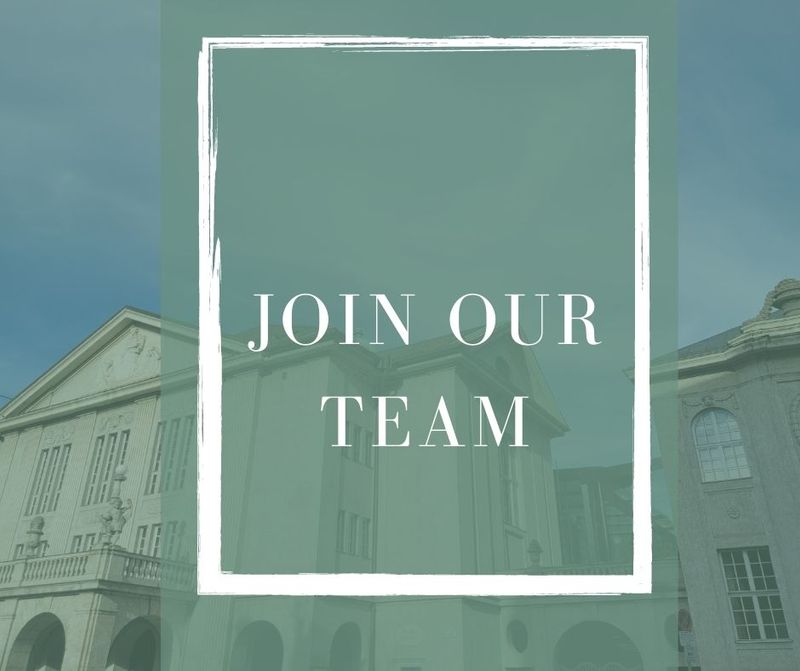
Job Offers
Please check the German website for current job offers.
Contact:
Mag. Christin Struber
Personnel officer and accounting
bewerbung@mozarteum.at